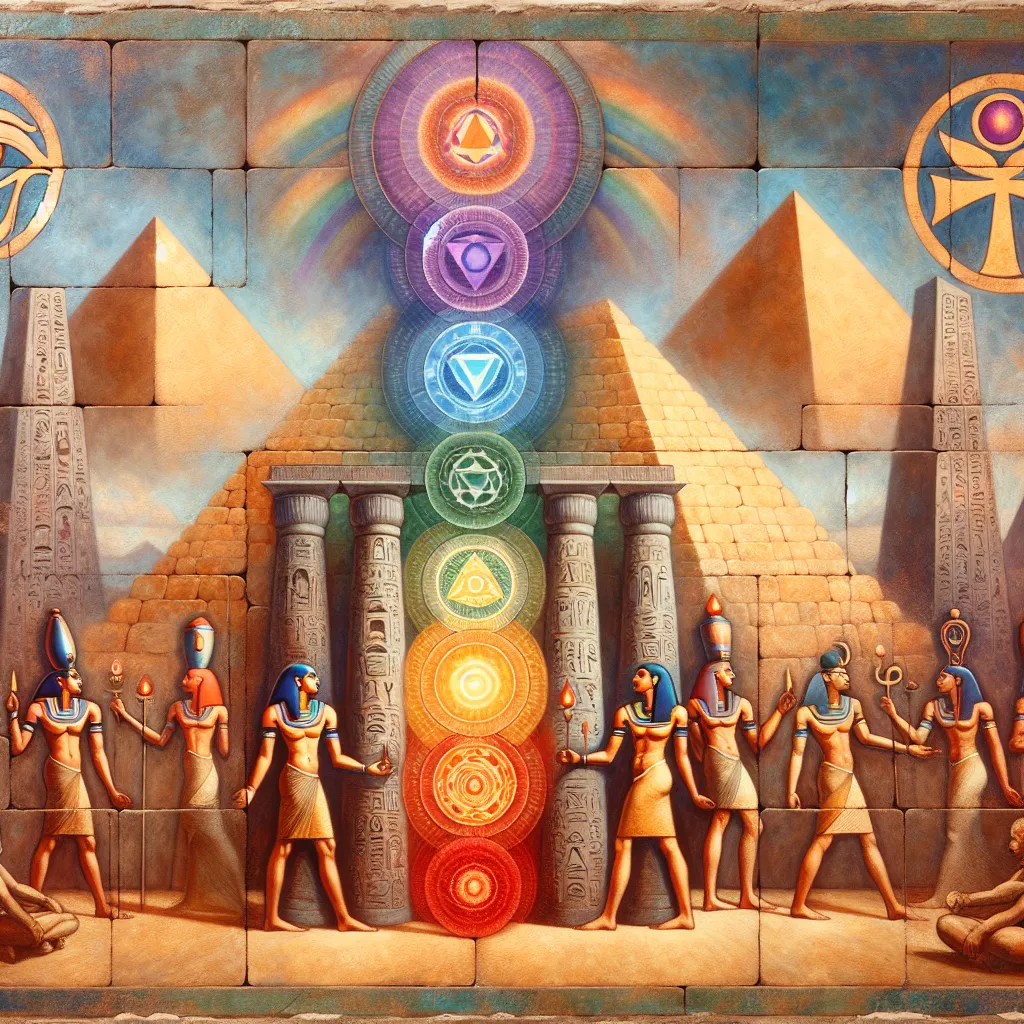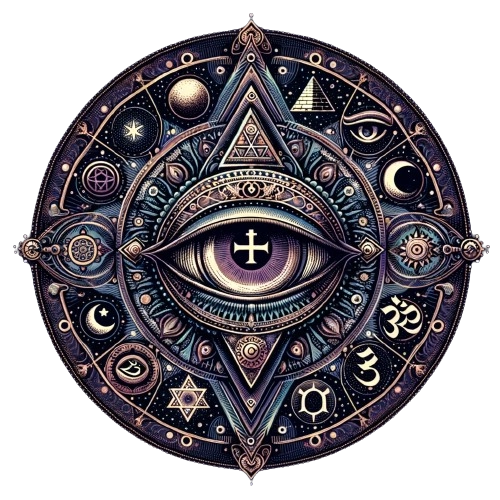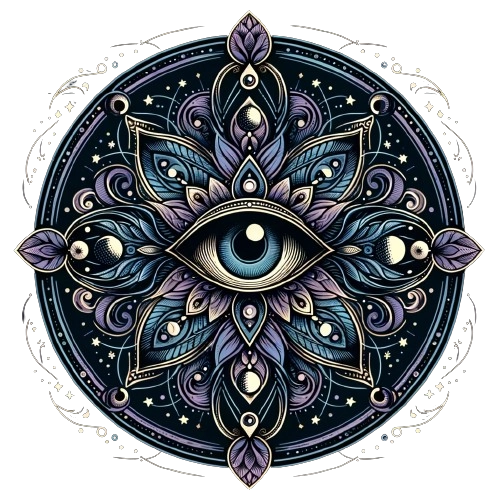
- Published on
- Authors

- Name
- You
Chakras in Egyptian Mysticism: Energy Centers and Spiritual Practices
In the sands of time, ancient Egypt has always held a mystic allure, enchanting scholars and spiritual seekers alike. One of the profound aspects of this ancient civilization is its understanding of energy centers, akin to the concept of chakras found in Eastern traditions. These energy vortices played a crucial role in their spiritual and daily lives.
The Concept of Energy Centers
Egyptian mysticism embraces the belief that the human body is interwoven with an intricate network of energy channels. These channels are said to intersect at key points, forming energy centers that facilitate the flow of spiritual vitality, often termed as ka or life force.
Table of Correspondence: Egyptian Energy Centers and Chakras
| Egyptian Center | Location | Associated Chakra | Attributes |
|---|---|---|---|
| Crown (Benben Stone) | Top of the head | Sahasrara (Crown) | Divine connection, Spirituality |
| Horus Eye | Forehead (Third Eye) | Ajna (Third Eye) | Insight, Intuition, Perception |
| Throat | Throat | Vishuddha (Throat) | Communication, Truth, Expression |
| Heart (Ib) | Center of the chest | Anahata (Heart) | Love, Compassion, Harmony |
| Solar Plexus | Above the navel | Manipura (Solar Plexus) | Willpower, Confidence, Control |
| Navel (Kheper) | Navel | Svadhisthana (Sacral) | Creativity, Sexuality, Emotions |
| Root (Djed) | Base of the spine | Muladhara (Root) | Stability, Grounding, Security |
Spiritual Practices and Rituals
The Benben Stone: Ascending to Higher Consciousness
The Benben Stone symbolizes the primordial mound from which life sprang. Ancient Egyptians associated this energy center with the crown chakra, focusing on rituals that involved meditation and the invocation of deities such as Ra, the sun god. Using sacred geometry and vibrant golden motifs, the priests aimed to align their crown chakra with celestial energies, embodying enlightenment and divine awareness.
The Eye of Horus: Awakening Intuition
The Eye of Horus, a symbol representing protection and royal power, aligns with the third eye chakra. It was believed to endow its bearer with heightened perception and psychic abilities. Priests and initiates performed rituals involving the use of ankh amulets and blue lotus incense, invoking Horus's protection to clear blockages at this energy center, thus sharpening their insight and intuition.
The Ib: Heart's Emotional Harmony
The heart, or Ib, was the seat of emotion and morality in ancient Egyptian belief. It corresponded to the heart chakra, where love and compassion reside. Rituals here involved the harmonization of Ma'at, the goddess of truth and harmony, through musical incantations and the chanting of sacred texts. The goal was to preserve emotional equilibrium and foster a collective sense of unity.
Kheper: The Cycle of Rebirth
The navel, represented by the scarab beetle Kheper, associated with creation and rebirth, parallels the sacral chakra. Through the use of scarab amulets and fertility rites, it symbolized the continuous cycle of life. Rituals often involved water ceremonies and invocations to Hapi, the Nile god, enhancing the creative and regenerative energies within the individual.
Conclusion
The mysticism of ancient Egypt provides a fascinating parallel to the well-documented concept of chakras in Eastern traditions. Their approach to spiritual practices was holistic, intertwining the physical body with the etheric realms, creating a harmonious flow of energy. By understanding these ancient rituals and symbols, modern spiritual enthusiasts can gain deeper insights into the timeless quest for harmony and enlightenment.
Embrace these ancient teachings and let the wisdom of the pharaohs guide your spiritual journey.
Feel free to delve further into the depths of Egyptian mysticism and align your energies with the infinite wisdom of the ancients.
